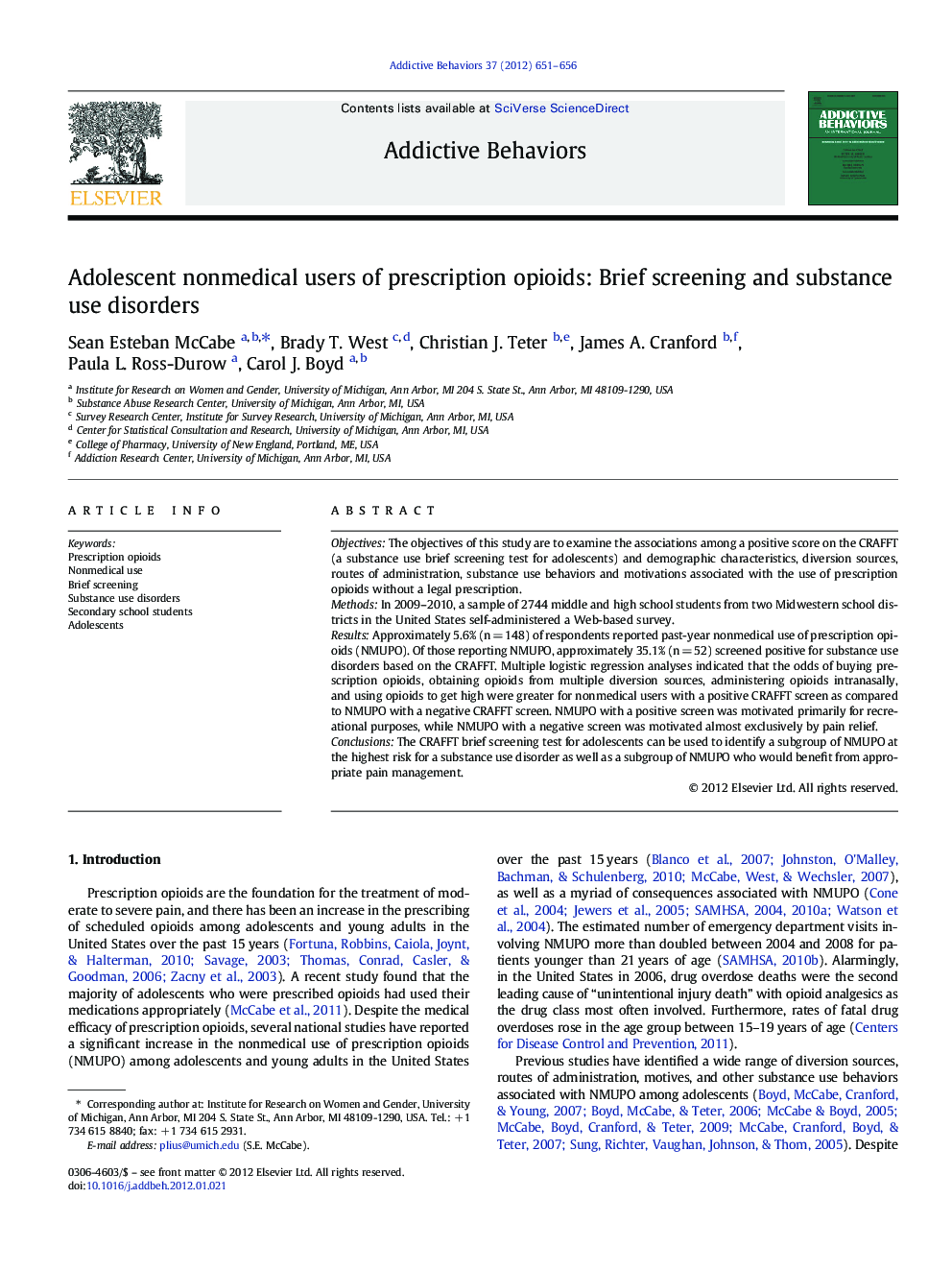| Article ID | Journal | Published Year | Pages | File Type |
|---|---|---|---|---|
| 899461 | Addictive Behaviors | 2012 | 6 Pages |
ObjectivesThe objectives of this study are to examine the associations among a positive score on the CRAFFT (a substance use brief screening test for adolescents) and demographic characteristics, diversion sources, routes of administration, substance use behaviors and motivations associated with the use of prescription opioids without a legal prescription.MethodsIn 2009–2010, a sample of 2744 middle and high school students from two Midwestern school districts in the United States self-administered a Web-based survey.ResultsApproximately 5.6% (n = 148) of respondents reported past-year nonmedical use of prescription opioids (NMUPO). Of those reporting NMUPO, approximately 35.1% (n = 52) screened positive for substance use disorders based on the CRAFFT. Multiple logistic regression analyses indicated that the odds of buying prescription opioids, obtaining opioids from multiple diversion sources, administering opioids intranasally, and using opioids to get high were greater for nonmedical users with a positive CRAFFT screen as compared to NMUPO with a negative CRAFFT screen. NMUPO with a positive screen was motivated primarily for recreational purposes, while NMUPO with a negative screen was motivated almost exclusively by pain relief.ConclusionsThe CRAFFT brief screening test for adolescents can be used to identify a subgroup of NMUPO at the highest risk for a substance use disorder as well as a subgroup of NMUPO who would benefit from appropriate pain management.
► Two subgroups of adolescent nonmedical users of prescription opioids were examined. ► A third of nonmedical opioid users had a positive substance abuse screen. ► A positive screen was associated with recreational motives. ► A negative screen was associated with pain relief motives. ► The CRAFFT can be used to identify at-risk nonmedical prescription opioids users.
